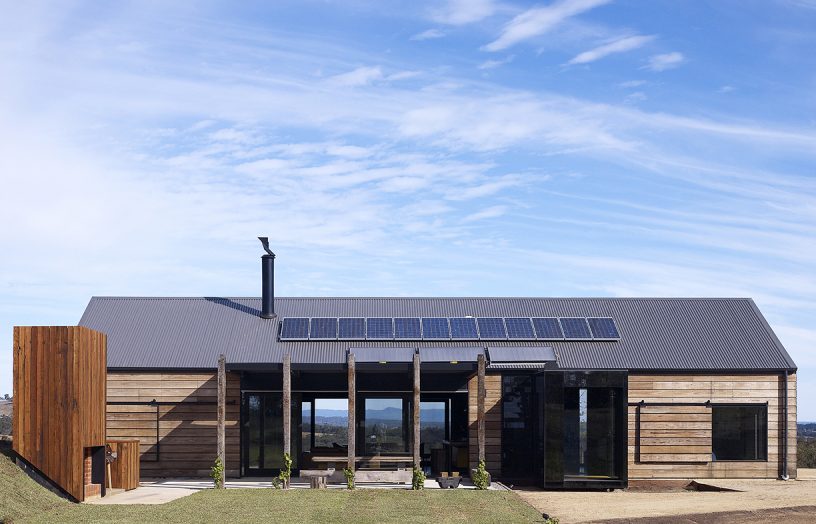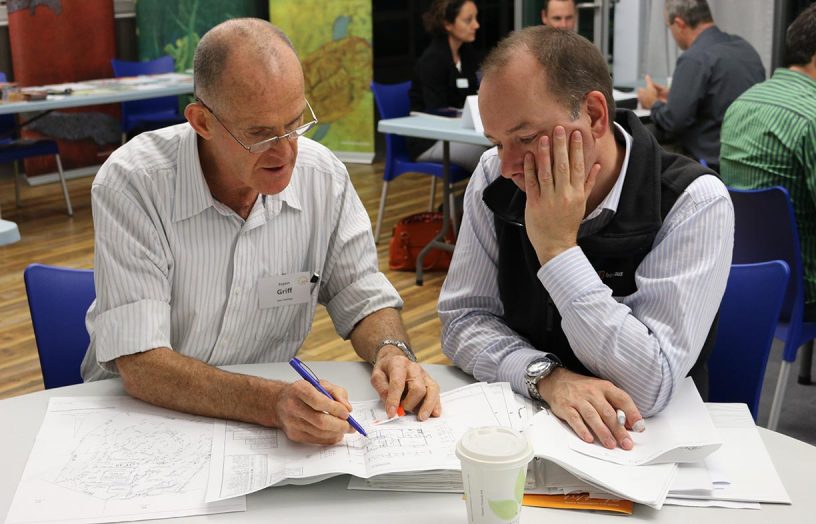Going off-grid
There’s a lot to consider when deciding if an off-grid renewable energy system is right for your home. For many remote properties there’s no choice other than to go off-grid, with the cost of connecting to the grid higher than installing even a large independent energy system.
Others are looking to escape the electricity grid and associated bills. Going fully off-grid is rarely the answer due to its high up-front cost. A grid connected solar system is usually the economic solution, perhaps with a grid-connected battery, too.
Being responsible for your own energy generation can be enormously satisfying instead of using grid electricity from coal-fired power stations. Explore the list below to help you find out more about off-grid renewable energy systems, and use our Advice Service to plan the right system for your household.
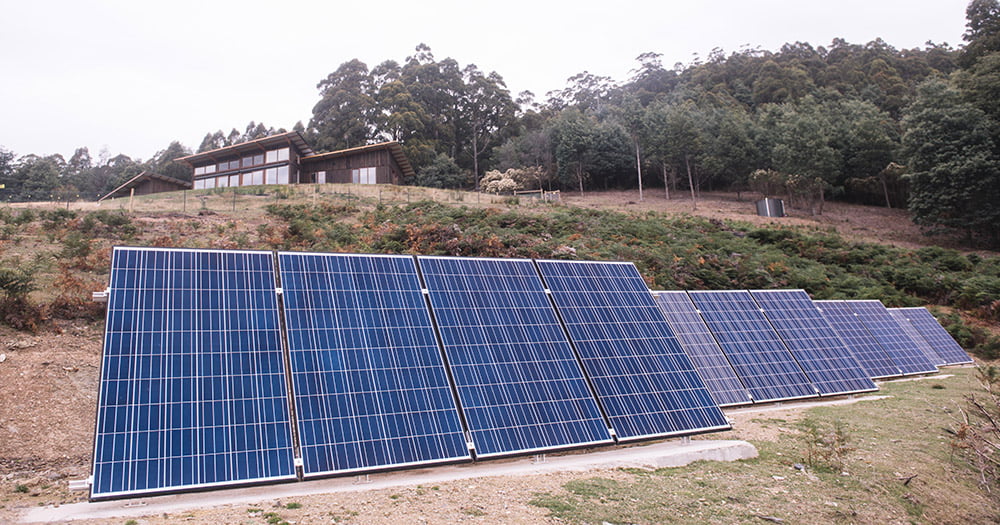
Everybody’s situation and motivations are different when it comes to quitting the grid, but often people are interested in saving money, becoming more self-sufficient and reducing their environmental impact. It is feasible to achieve all these things, but it’s worth taking a step back to ensure the biggest impact for the money you spend.
Taking into account that there are three energy grids that we rely on, disconnecting your home from the electricity, gas and petrol/diesel grids is possible, but it’s challenging and may require a large upfront investment. Quitting one or two grids is a lot easier and cheaper, and can provide a high degree of self-sufficiency, bill savings and a positive environmental impact.
For more information, please see the article Should you quit the grid?
Many households are choosing to quit the gas grid and go all-electric with a renewable energy supply. Read more about the reasons for going-off-gas in Renew’s Household Fuel Choice report.
A household off-grid solar power system is installed by an accredited solar installer and includes solar panels, a battery bank and a battery inverter to supply the household switchboard with standard 230 volt AC electricity. It also needs a way to regulate the energy coming from the solar panels. Depending on the type of system, this can be done either via a charge controller (also called a regulator) or via a solar inverter. Most off-grid households also have a petrol or diesel generator to supplement the solar during a cloudy week, or when electricity consumption is higher than normal.
The battery bank is often described as the most important part of the system, as it stores the energy produced by the solar panels for later use, for example, on cloudy days or at night. It’s also the most expensive component. The battery bank may consist of individual batteries linked together to form a large battery bank, or it might use one or more pre-packaged energy storage system units, much the same as used in on-grid solar systems that include storage – there is quite a large overlap between the two systems nowadays. Find out more about batteries in the Renew magazine Battery Buyers Guide, and the Energy Storage Buyers Guide for what’s available in prepackaged systems. Also check out the Solar Quotes Energy Storage System table for the latest options available.
Read the Renew magazine article Know your renewables: Off-grid Basics to find out how a typical system works, its components, and the how and why of going off-grid.
Recently installed solar power systems tend to be quite large, around 5 kilowatts or 15 panels or more. Such a system’s annual generation exceeds many households’ annual electricity consumption. Can’t these people simply mount a battery on the garage wall and sever their electricity connection?
One hurdle is that normal grid-connected solar systems use a specific type of inverter which requires there to be an external power grid connected to work. Without the grid, they won’t produce mains output voltage – a safety feature called anti-islanding. To add a battery to an on-grid system, you need to use a hybrid inverter, or reconfigure the system completely – a job for an experienced off-grid installer.
Adding a battery to a grid-connected solar system has some benefits, but it won’t generally enable you to go off-grid. Off-grid systems use a different type of inverter that can produce its own equivalent of the grid, either the afore-mentioned hybrid inverter or a dedicated stand-alone inverter (or inverter charger). Off-grid systems can be configured in several ways, with a wide range of available equipment and are much more complex than a typical on-grid system. Visit our Batteries and Energy Storage section for more information.
It doesn’t matter how many solar panels or what other equipment you have, if your battery bank is not up to the task then the system will fall over. All other parts of a system can be upgraded or added to quite easily, but if you select too small a battery or one not suited to your needs then your system performance, and the battery’s usable life, will suffer.
Lead-acid batteries have been used effectively for storage in off-grid renewable energy systems for many years, however lithium batteries have taken over much of the off-grid market now due to recent reductions in their prices as well as higher efficiency and no need for maintenance.
Lithium batteries require advanced battery management systems (BMS) to ensure the battery voltages do not stray outside the allowable voltage ranges, as lithium batteries are more easily damaged with excessive high or low voltages. BMS systems are readily available and only add a small amount to the price of a lithium battery bank, and many lithium batteries come as a complete set of batteries and BMS in a box, ready to use.
Find out more in Renew magazine’s Battery Buyers Guide.
The best option for an off-grid home is generally to house the off-grid system in a small dedicated shed, supplying the nearby house with standard 230V AC electricity via a buried cable. Lead-acid batteries are not suitable for location inside or beneath a house, and lithium batteries must be outside or inside non-occupied areas such as in the garage. The battery shed should not be used for for tools and equipment and other junk.
It’s a good idea to keep the battery cool, as temperature extremes tend to reduce their lifespan, so the shed should be ventilated and shaded if possible.
Off-grid households need to carefully consider when and how electricity is used to get the most out of their finite electricity supply. Often it’s economic to replace an existing appliance (a fridge, for example) with a new, more efficient model, because the resulting savings in solar panels and batteries outweigh the appliance cost! Households also need to consider if the home is insulated and draughtproof, with well-placed windows and eaves to admit winter, but not summer sunlight.
This off-grid home in Sanctuary magazine shows how one household used thermal rating software and 3D modelling to get the most thermally-efficient design.
If you’re building a new off-grid home, consider optimising the solar panel tilt for maximum winter output.
A key step to planning a reliable off-grid system is to work out your entire home energy requirements. An off-grid solar power system must generate enough energy throughout the year and have enough battery capacity to meet the home’s requirements, even in the depths of winter when there is less sunlight.
We examine this more in the question How do I reduce electricity use in an off-grid home? below.
If your property has a good creek or spring, micro-hydro generation can be a fantastic energy source. Unfortunately such locations are rare in our wide, brown land.
In years gone by, small wind turbines were relatively common to supplement solar generation. However, solar’s dramatic cost reductions over the past decade have rendered wind uncompetitive.
Most off-grid homes also have a generator fueled by petrol or diesel. This is very useful during a week of cloudy weather, or when electricity consumption is higher than usual.
Explore Renew magazine for articles on these systems.
A tight building envelope is essential for lowering electricity use, but households planning an off-grid system should also look at their appliances, fridges, lights and more to ensure they’re not going to waste precious electricity. Remember, the less energy used, the fewer solar panels and batteries you are likely to need.
Find out more about reducing energy consumption in our Energy Efficiency section.
Households should carry out an energy audit when planning their off-grid system, to work out exactly what needs to be powered, its expected power consumption and hours of use.
Many people choose to eliminate large electrical loads when they go off-grid. This has the advantage of reducing system size and cost. But an off-grid system can run whatever the grid can, provided the system is sized correctly. So, if you really want a pool pump or a welder, you just need to size a system large enough to handle that load.
Hot water is a large energy consumer. This can be supplied several ways, from the ‘old school’ wetback on a wood heater complementing a solar thermal hot water system to the ‘new-fangled’ efficient electric heat pump.
On a sunny day the off-grid batteries will have no problem charging fully, and you’ll have a lot of potential solar generation going to waste. On such days there’s no problem running a load such as a small, efficient, split-system air conditioner. However a cloudy day may be a different matter.
We look at off-grid electrical loads in Renew magazine’s Off-grid basics article.
Sizing is one of the top considerations when planning an off-grid system to ensure you’ve got a year-round electricity supply, and can be more complex than for a grid-interactive system.
There are two aspects of the system load that need to be considered. The first is the energy used, in kilowatt-hours per day. This requirement determines the size of the battery bank and the solar array. The more energy you use, the larger both of those will need to be to both generate and store the required energy.
The other aspect is the peak power requirement, and it determines the size of the inverter you require.
Detailed system design must be done by someone accredited by the Clean Energy Council. We look at how to choose a reputable installer in our Grid-interactive solar section.
A caravan or shed might use a ‘camping-style’ off-grid solar system rather than one suitable for a house. The battery bank would be smaller, probably 12 volts or 24 volts, with solar panels connected via a simple charge controller. Direct Current (DC) appliances can be run straight from the battery, for example LED lights, a camping fridge and caravan water pump. A small, plug-in inverter can run a laptop or cordless tool battery charger.
Find out about DC appliances in Renew magazine’s DC Appliance Buyers Guide.
A microgrid is small network of electricity users with a local source of supply that can be attached to a centralised electricity grid, or that can function independently of the grid. A group of houses, an apartment complex or businesses can operate away from the grid via a microgrid.
As with other grids, a microgrid consists of distribution (e.g. electrical cabling), electricity generation and grid regulation. In microgrids, however, generation (e.g. solar) occurs close to consumption. This enables the sharing of energy between houses, businesses, or apartments, with the potential for associated network and billing benefits.
Read about this microgrid trial in Renew magazine, where 14 houses had solar panels and batteries installed, and shared a cloud-based control platform to enable locally generated/stored energy to be shared between homes.
LATEST ARTICLES
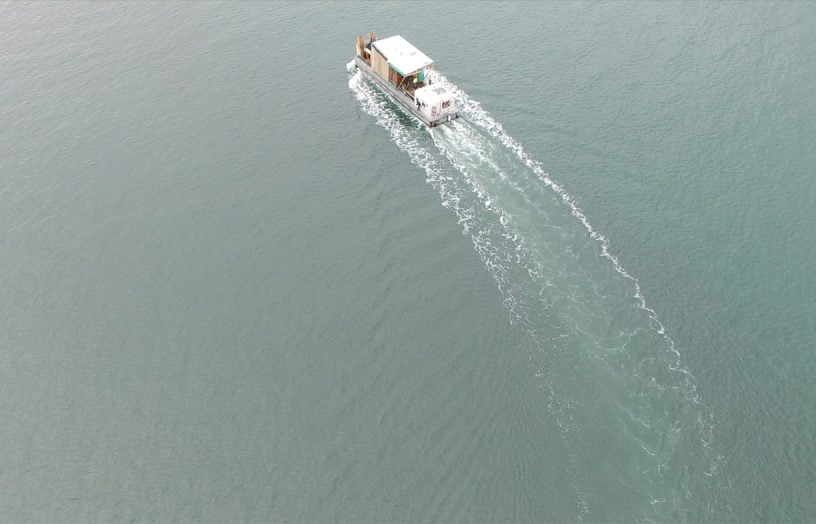 House profiles
House profiles
Modular, prefab & off-grid
Designed to be transportable by truck and barge to French Island – one of Victoria’s most inaccessible places – this prefabricated farmhouse is no ordinary coastal retreat.
Read more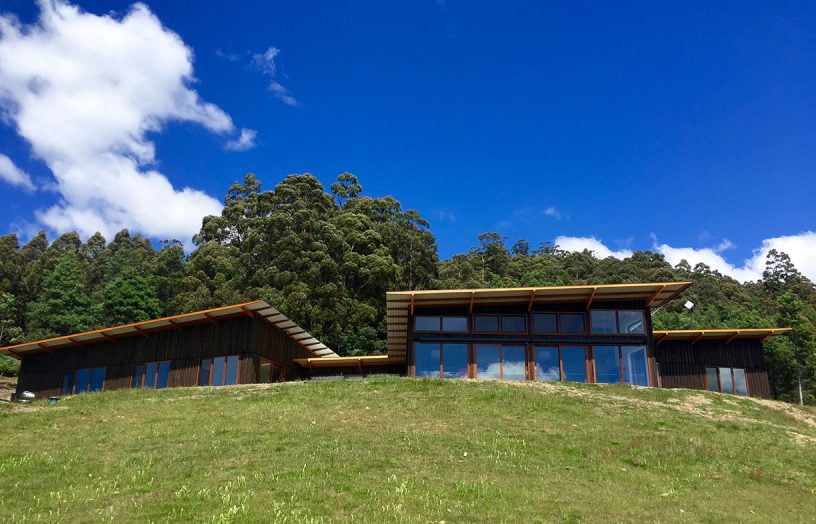 New build
New build
Tassie off-grid
Going off the grid in preparation for retirement is a dream for many and a reality for Peter and Robyn Tuft who run their house and car from a solar and micro-hydro power system.
Read more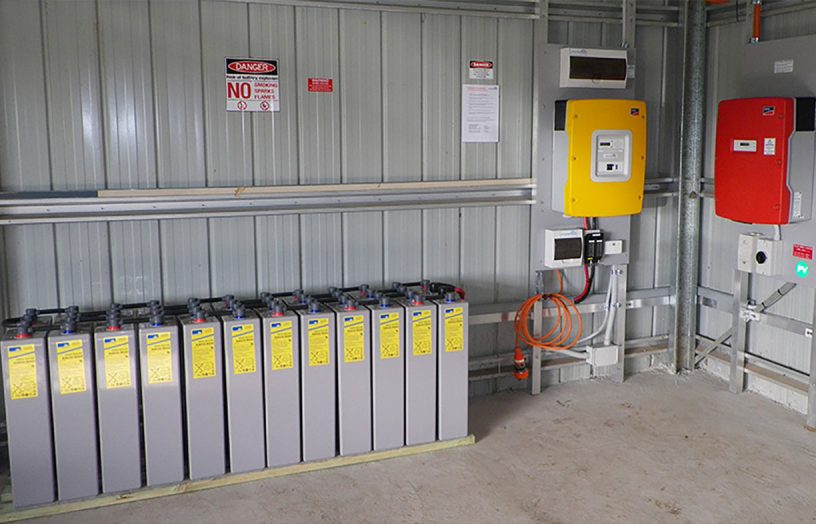 Solar & batteries
Solar & batteries
Know your renewables: off-grid basics
With reducing grid reliability and steadily increasing electricity prices there’s been renewed interest in giving energy companies the flick. Lance Turner takes a look at the how and why of going off-grid.
Read more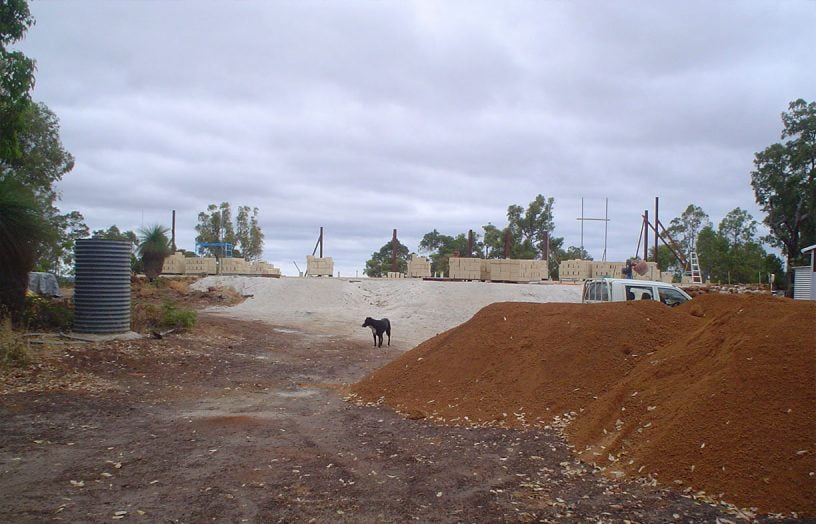 Solar & batteries
Solar & batteries
Off-grid in WA: Riding the trail to sustainable living
Jai Thomas describes his parents' journey to off-grid living.
Read more

